Cassis is our Jam! The Tiny Town That Has it All
10 min readWe were always entranced by the promise of the little seaside town named Cassis. Nestled right next to the city of Marseille, Cassis is the first of a series of dozens of beach towns that stretch some 150 miles along the Provence/Côte d’Azur coast to the Italian border, like a glistening string of white pearls around the blue décolletage of the Mediterranean Sea.
Teresa (my beloved spouse and co-conspirator in all my flâneuring escapades) and I have been up and down much of that coast in years past but never made it to Cassis. Frankly, famous places like Cannes and St. Tropez don’t excite us. Their very popularity has led to the construction of endless resort hotels, glitzy condos, and over-built beach promenades that squeeze the authenticity out of former fishing villages. It’s not our scene.
But we always wondered, might Cassis be special?
Learn more about France and other countries in our daily postcard e-letter. Simply enter your email address below and we’ll send you a FREE REPORT: A Taste of France: All the Ingredients for the Good Life.
By submitting your email address, you will receive a free subscription to IL Postcards and special offers from International Living and our affiliates. You can unsubscribe at any time, and we encourage you to read more about our Privacy Policy.
Our basis for this hypothesis was that the word “cassis” is French for “blackcurrant.” Cassis confiture is my favorite jam, and Créme de Cassis is delightful liquor; both are made from that same small, dark, sweet-tart-and-delicious berry. The classy summer drink, kir, is simply a dollop of crème de cassis in white wine; you can upgrade the wine to champagne and voilá, Kir Royal! It’s one of Teresa’s favorites.
So, logically, how could Cassis be anything less than simply splendiferous?
We decided to go there for a week and see if our hunch was right. Might Cassis, if it lived up to its namesake, even be a place we would consider calling home in the later years of our retirement as we move from the “go-go years” to the “go-slow years”?
We were so right about Cassis and so very wrong at the same time.
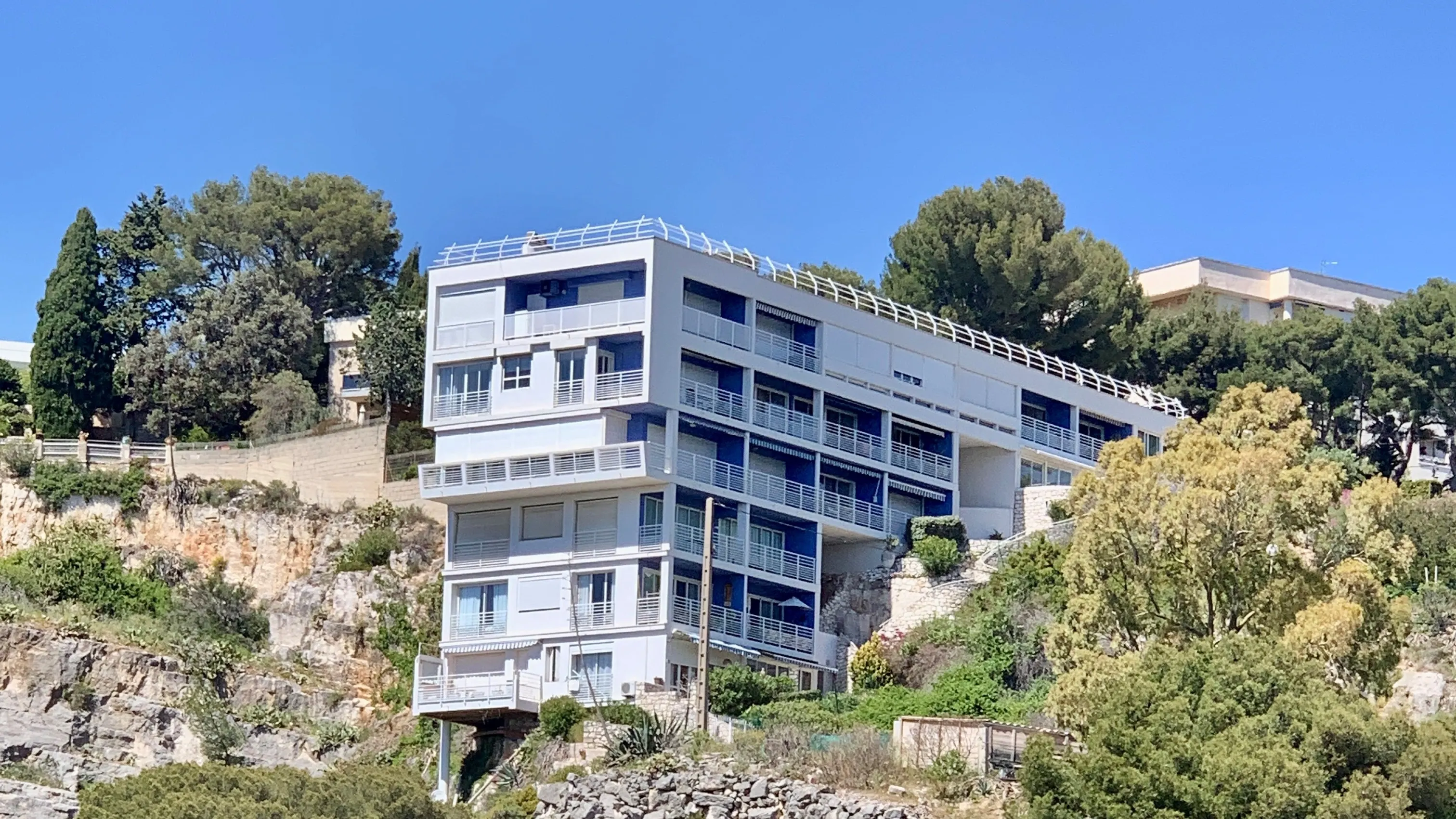
Our condo in Cassis.|©Tim Ward
First impressions from the balcony of our little rental condo (above): super bon! The view overlooked the wide blue bay and gave us a full frontal view of the most amazing cliff we have seen since the fiords of Norway. With a drop of 394 meters to the sea, Cap Canaille is, in fact, the highest Maritime cliff in France. The name, so I was told, means “the mountain that swims.”
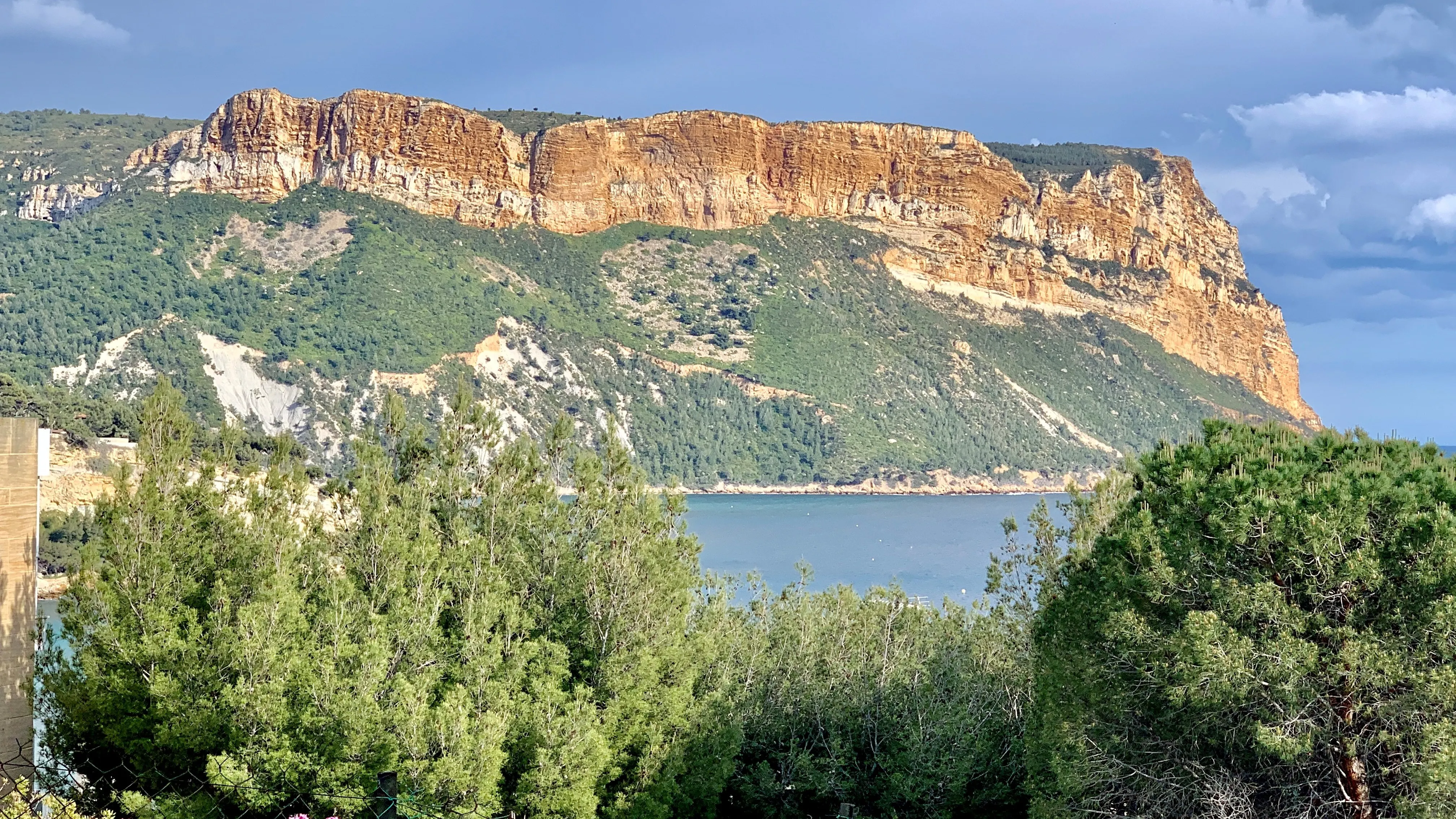
The view from our terrace.|©Tim Ward
“Aha!” I said to myself as I stared at that cliff the day of our arrival, “The red ochre layers in those cliffs…could that be the reason the town is named Cassis? Because the cliff looks exactly like cassis in a kir?”
“Nope. That’s the part Teresa and I were dead wrong about. We really should have known better because cassis, the berry, does not grow anywhere near Cassis, the seaside town. It grows mostly in Burgundy, which is where cassis, the liquor, is produced. In fact, kir (the drink) was named after Félix Kir, a former Mayor of Dijon, the capital city of Burgundy.
The town of Cassis was called Tutelæ Charsitanæ in the first century, suggesting a “Car-s” root, from the pre-Indo-European “Kar” meaning “stone” or “rock.” (Not to gloss over that point, but “pre-Indo European” means it’s very, very old: the town was named before the Gauls, Celts, Visigoths, Romans, Greeks, or any other historically known people passed through the area). By the 15th century, the name had evolved to Carsicis and has since been simplified to Cassis. So, the town is named for the big red rock, not the little blackberry.
It was a pretty dumb mistake. But that mistake is what finally got us here. So, no regrets.
We found so much to love in Cassis…
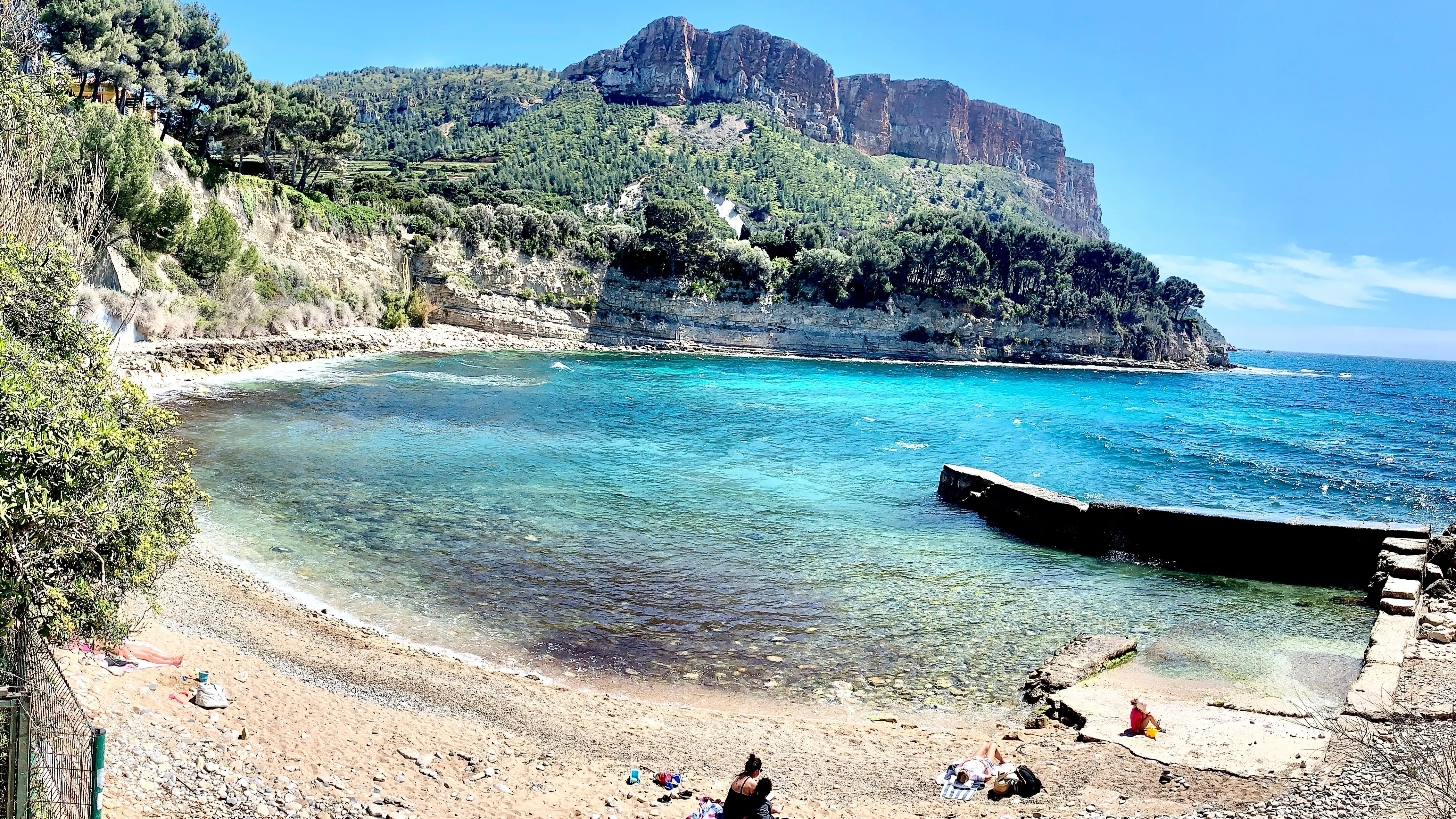
Plage Du Corton |©Tim Ward
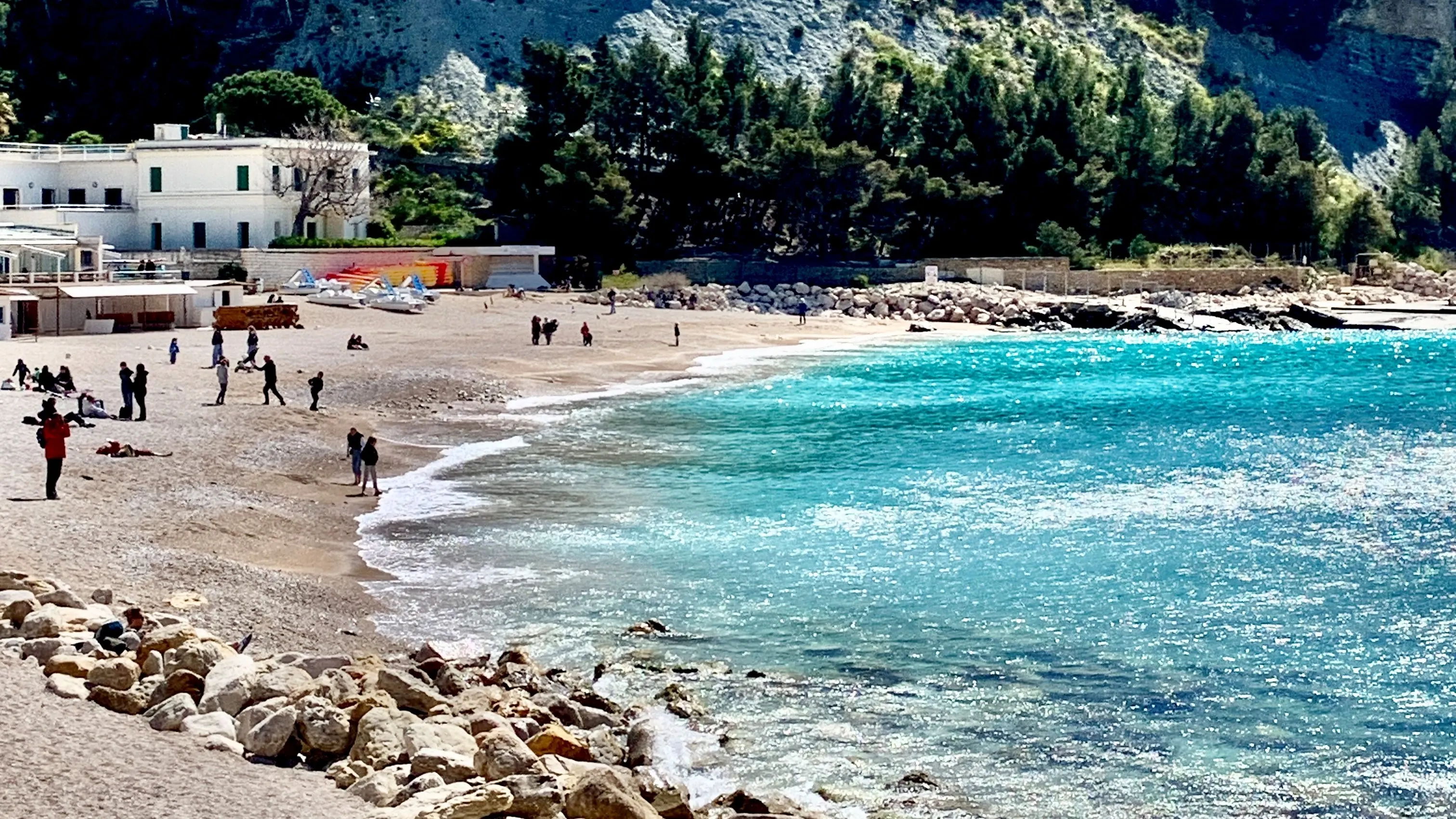
Plage De La Grande Mer|©Tim Ward
There are three of them, with people swimming and scuba diving in the turquoise waters even in mid-April. By mid-summer, I imagine these are all packed. Remarkably, the third beach, just a ten-minute walk from the center of town, is entirely undeveloped. It’s tucked away in a secluded bay close to the big cliff.
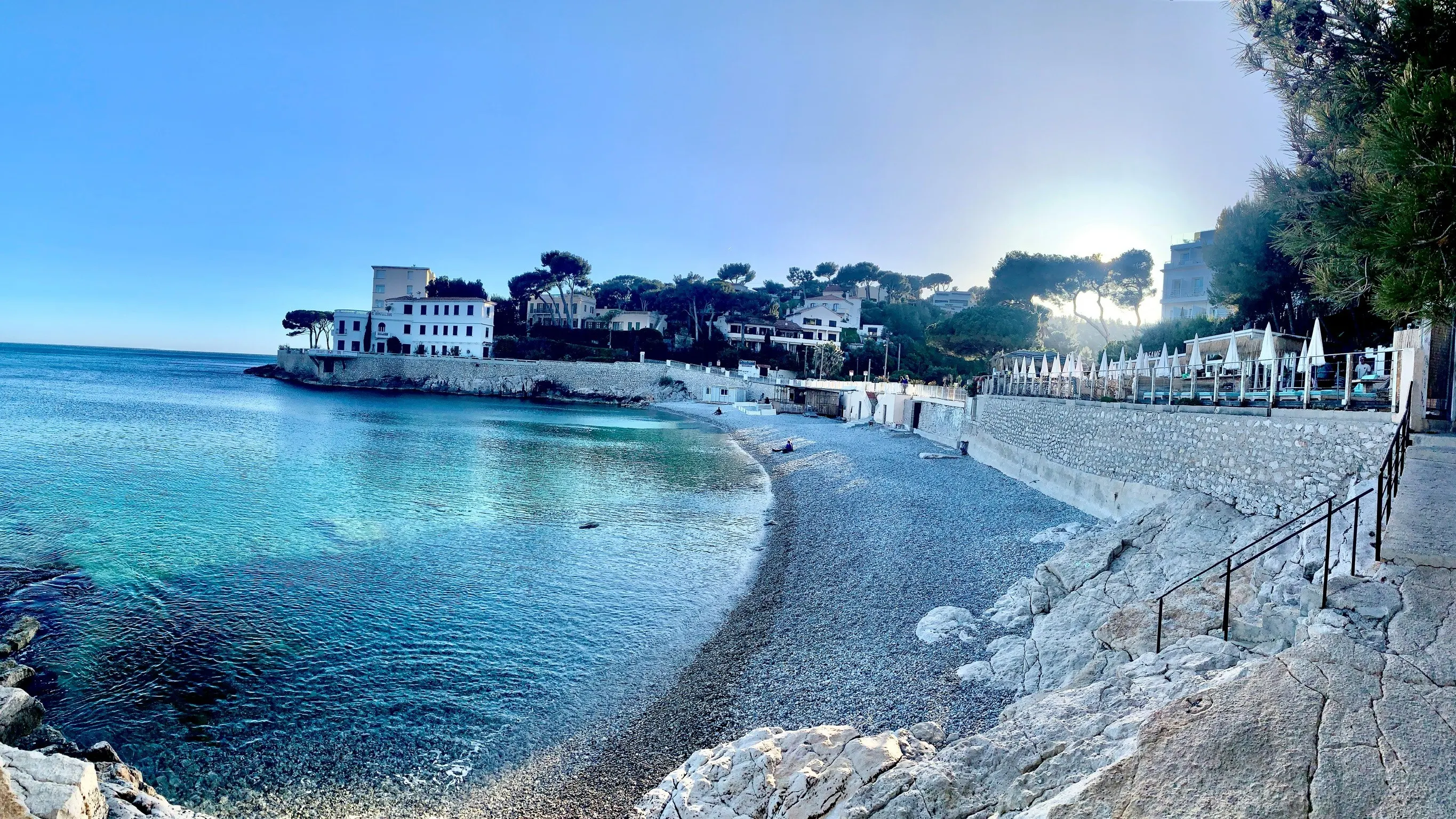
Bestouan Beach |©Tim Ward
Owned by the lords of Baux in the 13th century, the chateau is now a privately run guest house (I’m sure it’s been renovated). Surprisingly, it’s not much more expensive to stay there than the hotels in the town center.
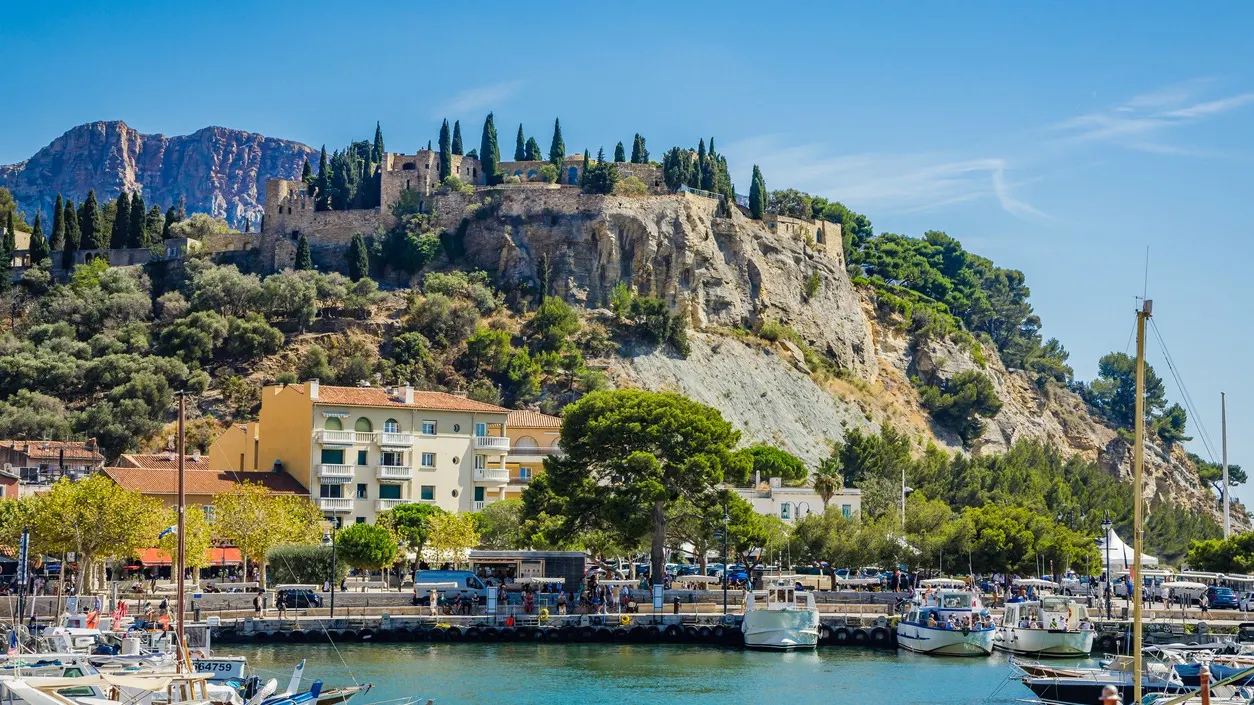
Cassis Castle|©iStock/Jean-Luc Ichard
Teresa insists we stay in the castle next time we visit Cassis — and there will be a next time. She wants the Romantique suite, bien sur, at 750€ a night. I’m angling for the “Upper Dungeon” room (no joke!) at 290€ a night. The castle owners light up the outer walls in the evening in a display that looks utterly breathtaking from the port. We caught a glimpse of it one evening as the full moon rose over the cliffs:
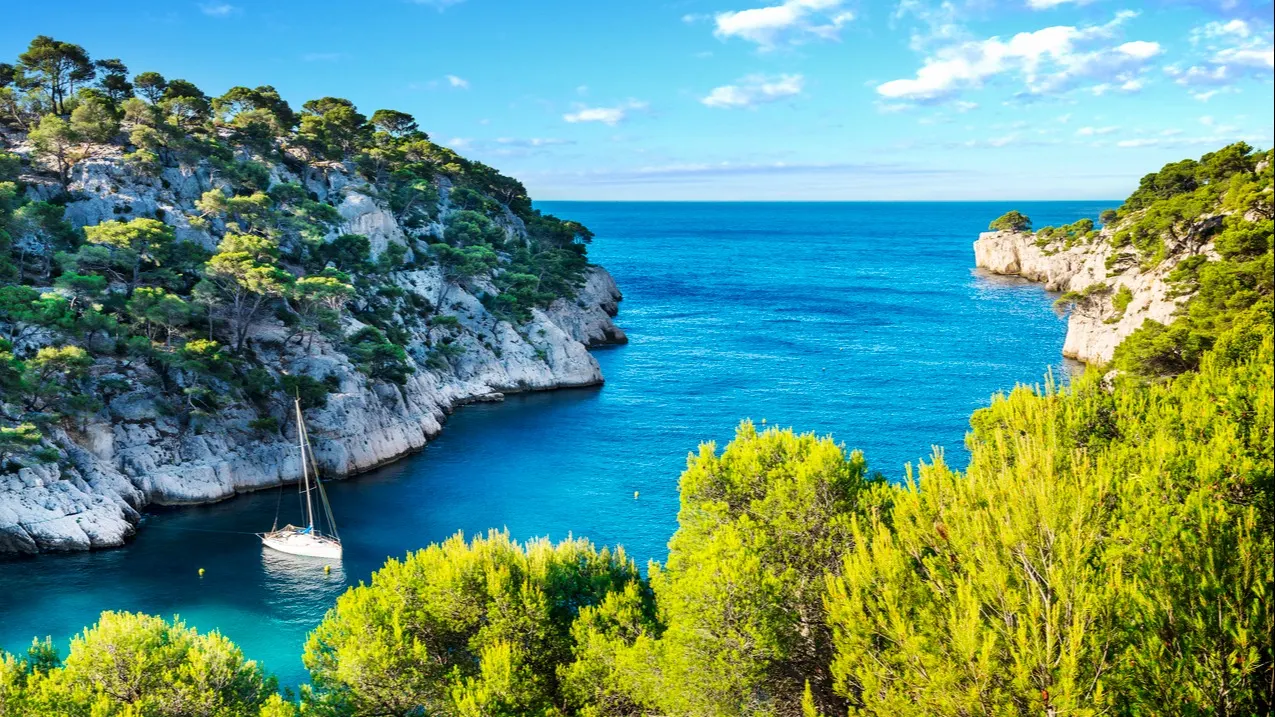
©iStock/ventdusud
These are a series of several long, limestone valleys carved into dramatic cliffs on the western edge of Cassis through eons of time. The sea rushes in at the end of each, giving them a fjord-like appearance. One can either hike along the tops of the Calanques from town along well-marked trails or visit them by water via a tour boat from the port. At the end of each Calanque is a beguiling, pristine beach. In summertime, the tour boats allow passengers to jump overboard for a swim.
Most intriguingly, an underwater cave was discovered 37 meters below sea level in one of the Calanques. Divers followed its course deep into the darkness until they emerged above the waterline into a grotto covered with prehistoric wall drawings! The art has been dated to both 27,000 and 20,000 years ago: a time when the sea levels were much lower, and the cave entrance would have been on dry land. So idyllic little Cassis has drawn people to it for a long time. Like others in prehistoric France, this cave was for ritual use, so it’s likely the people lived around where the town is today. Maybe these folks were the first to call this area Kar?
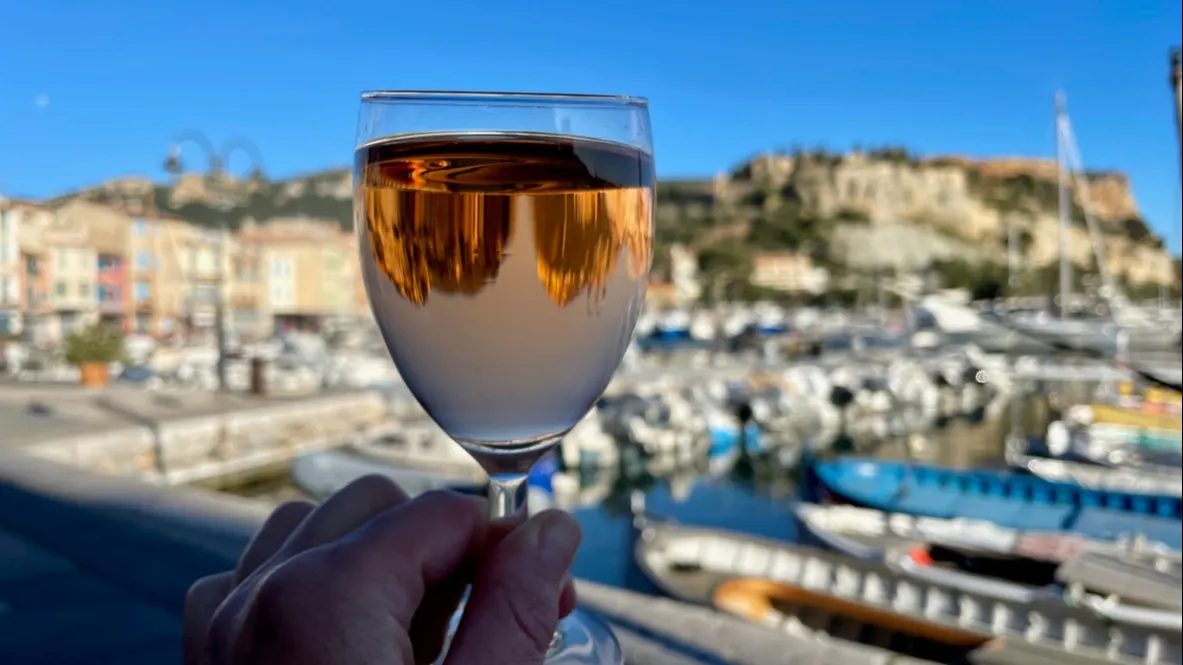
©iStock/Maleo Photography
Cassis has its own vineyards and winemakers that produce mostly white and rose wines that are every bit as crisp as the much more expensive Chablis. The difference, though (and here I rely on the Teresa’s recollections, for she has a memory palate akin to Sherlock Holmes’) is that Chablis is more “fruity and floral,” while Cassis white wines “taste like citrus and stone.”
One can stroll from the center of Cassis to the vineyards in about 10 minutes and drop by the wineries for a tasting. We chose St. Magdeleine Winery for our visit because it was one of the oldest and reputedly the best. It also specializes in eco-friendly “bio wines.” As we approached the road, we could see their vines growing in the shadow of Cap Canaille.
A delightful young woman named Camille hosted our tasting. As she poured, she told us all about the wines of Cassis and the winery. Most alarmingly, she said last summer was so hot they had to harvest the grapes in August. That has never happened before. (The annual harvest festival is typically in late September). Camille brought us out back to for the view of the bay from the estate, and showed us the little house where the parents of the winemaker live:
“That’s the house I want!” said Teresa. “It’s perfect: the cliff-top ocean view, the secluded beach, the Canaille, even a winery!” (Of course, she politely waited till Camille was no longer in earshot to tell me this).
I pointed out we would probably have to buy the whole winery to get the house.
“Maybe we could run the winery….”
Ah, but even if we had the funds for such foolishness, neither of us relished the actual work involved in winemaking. We would only be good at drinking the profits.
Learn more about France and other countries in our daily postcard e-letter. Simply enter your email address below and we’ll send you a FREE REPORT: A Taste of France: All the Ingredients for the Good Life.
By submitting your email address, you will receive a free subscription to IL Postcards and special offers from International Living and our affiliates. You can unsubscribe at any time, and we encourage you to read more about our Privacy Policy.
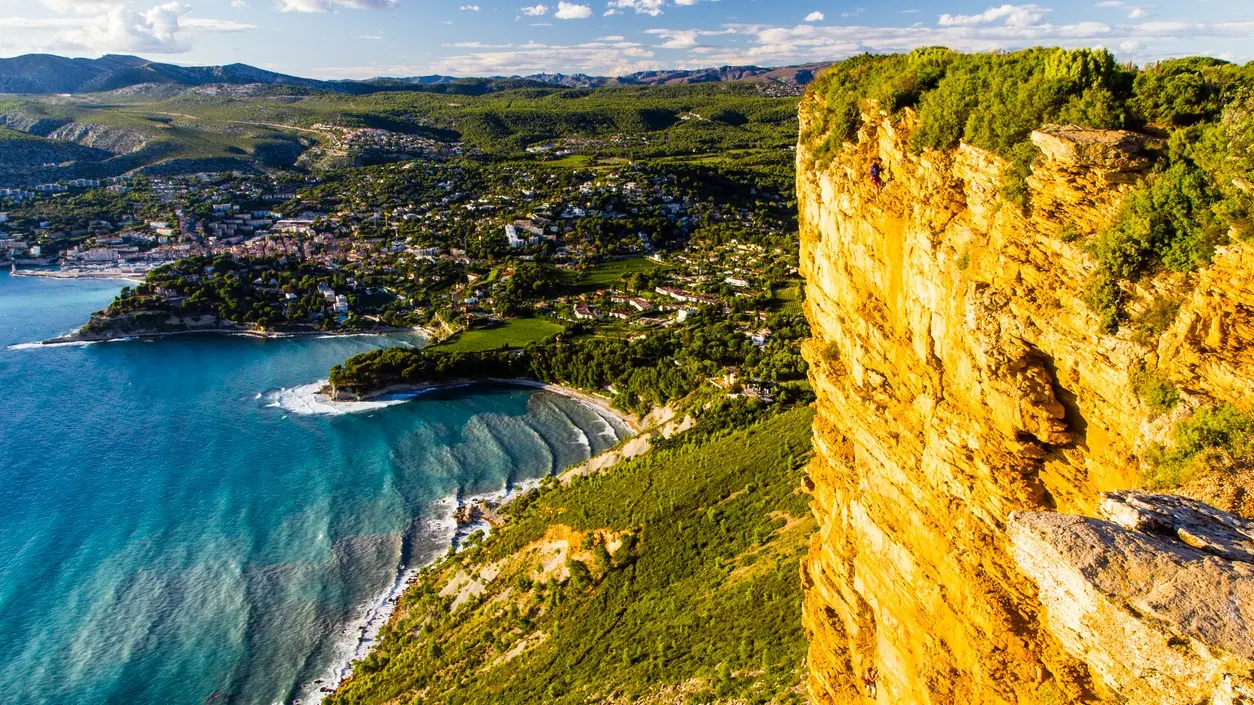
©iStock/Daniel Lange
That stupendous red cliff has a winding road that runs from Cassis all the way up and around to La Ciotat, the next town along the coast. Just back of the cliffs is a wild, forested area filled with trails. Whether driving, biking, or hiking, the view from the cliff edge looking down over Cassis and the Calanques is gorgeous — if somewhat vertigo-inducing. Teresa and I were careful to heed the dramatic signs warning of crumbling edges that could send careless tourists cartwheeling their doom.
The Port and Town Center
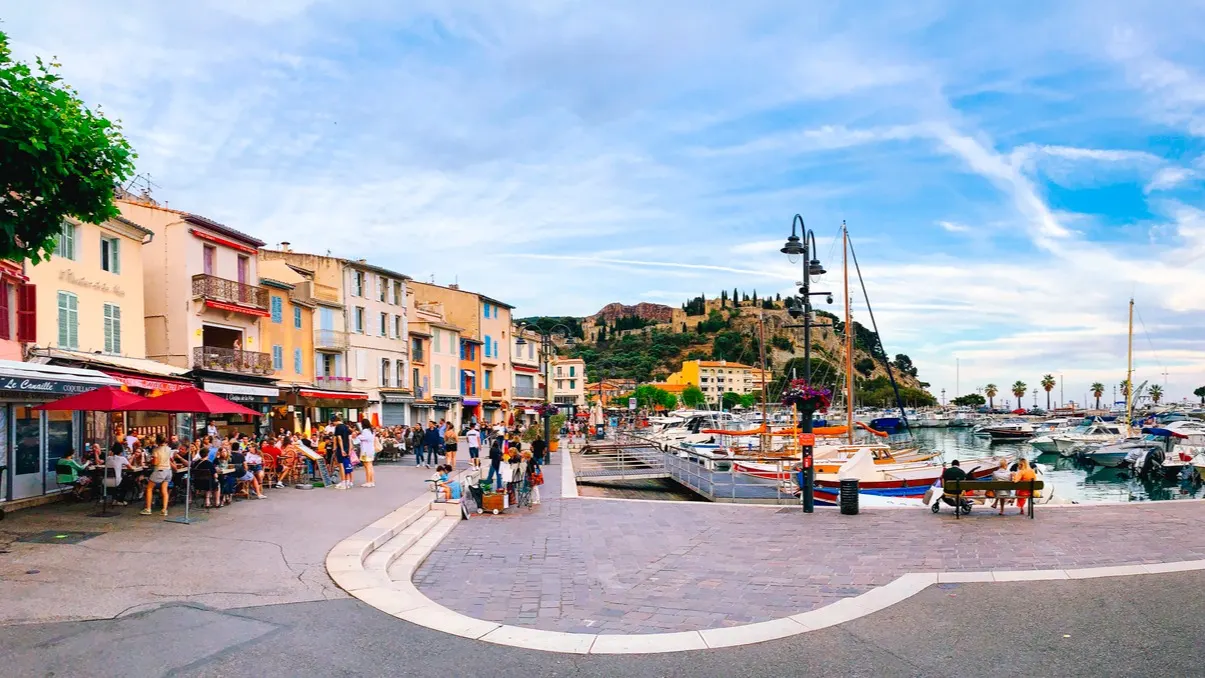
©iStock/pawel.gaul
While there are many marvelous things around Cassis, the real treasure is the town itself. It’s amazing that Cassis retains so much of its historic character as a fishing village.
There are no high rises in the center of town. No highway runs along the promenade (it’s pedestrian-only). It helps that Cap Canaille and the Calanques are both protected parks. In between, much of the area is steep slopes riven with limestone faults and ridges — a developer’s nightmare, I imagine. It must be hard to find open spaces that are flat enough and stable enough to build on.
The seafront promenade is lined with seafood restaurants and cafés. But not cheap food kiosks. Good fresh fish is on offer at every one. Right in front of the eateries, tiny fishing boats are moored. The daily catch goes straight to the kitchens and supports the local fisherfolk.
The port has been converted into one big marina…but no super yachts, no place for cruise ships to dock. Some 15 boats that could seat upwards of 50 passengers wait patiently by the lone kiosk that sells all the tour tickets to the Calanques. It’s all very low-key and collaborative. No touts, no advertising. It’s classy.
The real miracle, though, is that one block back from the promenade, the tourist trade vanishes. One can walk these quiet streets and find maybe a restaurant or café here and there. But it seems just a quiet Provençal town. Most of Cassis looks like a little pretty place going about its own business in its own quiet way, as it has done for the last few thousand years (and maybe much more).
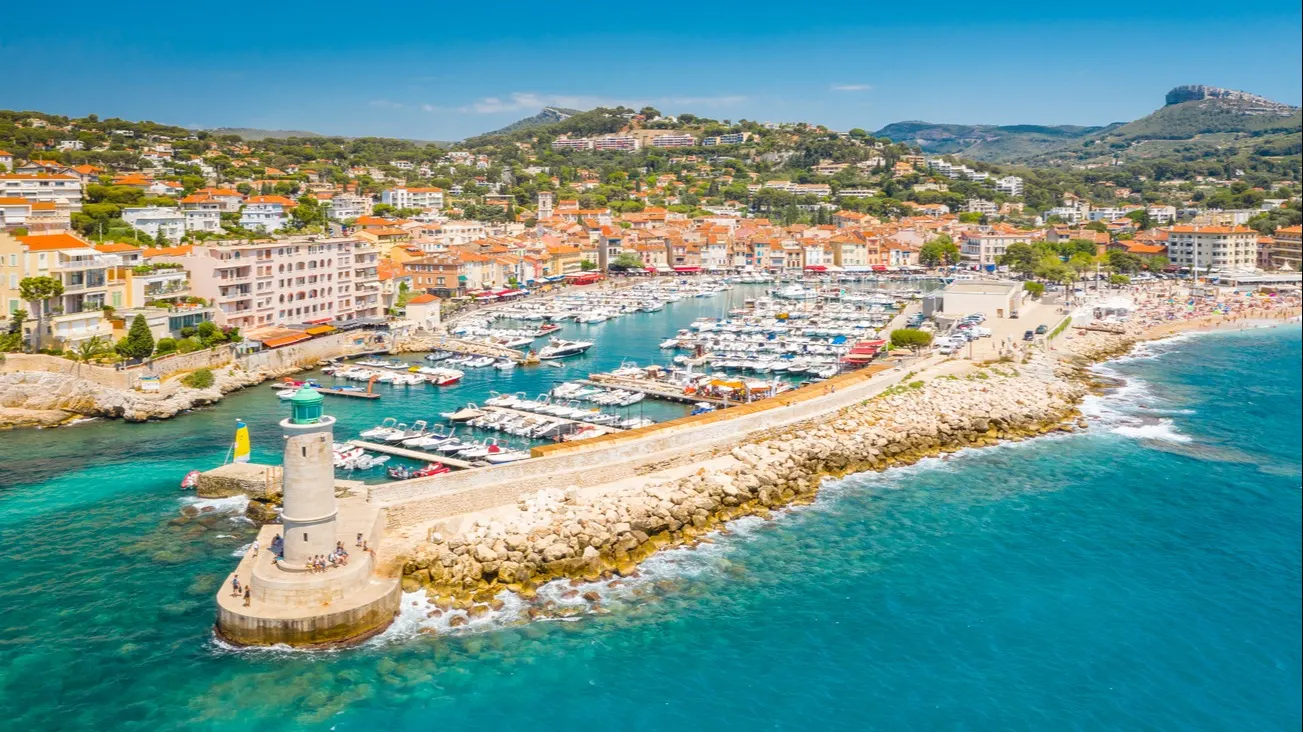
©iStock/Aleh Varanishcha
We were so charmed by the little town that when our days ran out on our condo on the hill, we could not bear to leave. We moved down to the promenade and took a room right above our favorite fish restaurant for a few extra nights of Cassis bliss. And, oh, that view!
Of course, Cassis is not perfect. Camille told us that in July and August, it gets quite hot and crowded with tourists. She says some residents she knows, she does not see them at all during the summer months. They either leave or just hunker down in their air-conditioned homes for a staycation.
Parking is an issue, too. This is not a town meant for cars. This is great when you are on foot, but when visiting, you have to be certain where you stay has a parking spot, or else you must stow your car in a public lot…not easy during tourist season. Once you get away from the port, the roads are also quite steep; if one is not in good shape, it can be a chore to get back and forth on foot from any condo or guest house with a view.
And finally, there’s not much in the way of nightlife or facilities. Marseilles is only a half-hour drive away, however, and there are connections by bus and by train. So it’s easy enough to get to a large city if one wants a break from all the bliss of Cassis.
So, who knows what our future may hold? Paris has been our home base for the past two and a half years as we have flâneured around Europe. Would Cassis be enough for us? Well, I’m pretty sure the citizens find it enough for them. The town’s motto, in the Provençal tongue (attributed to the great Provençal Nobel Laureate Frédéric Mistral) is: Qu’a vist Paris, se noun a vist Cassis, n’a rèn vist, which means: “Who has seen Paris and not Cassis, has not seen anything.”
Tim Ward is the author of Mature Flâneur: Slow Travels Through Portugal, France, Italy and Norway.
Learn more about France and other countries in our daily postcard e-letter. Simply enter your email address below and we’ll send you a FREE REPORT: A Taste of France: All the Ingredients for the Good Life.
By submitting your email address, you will receive a free subscription to IL Postcards and special offers from International Living and our affiliates. You can unsubscribe at any time, and we encourage you to read more about our Privacy Policy.



